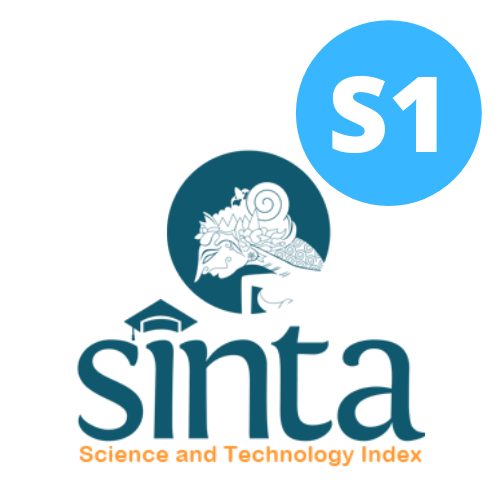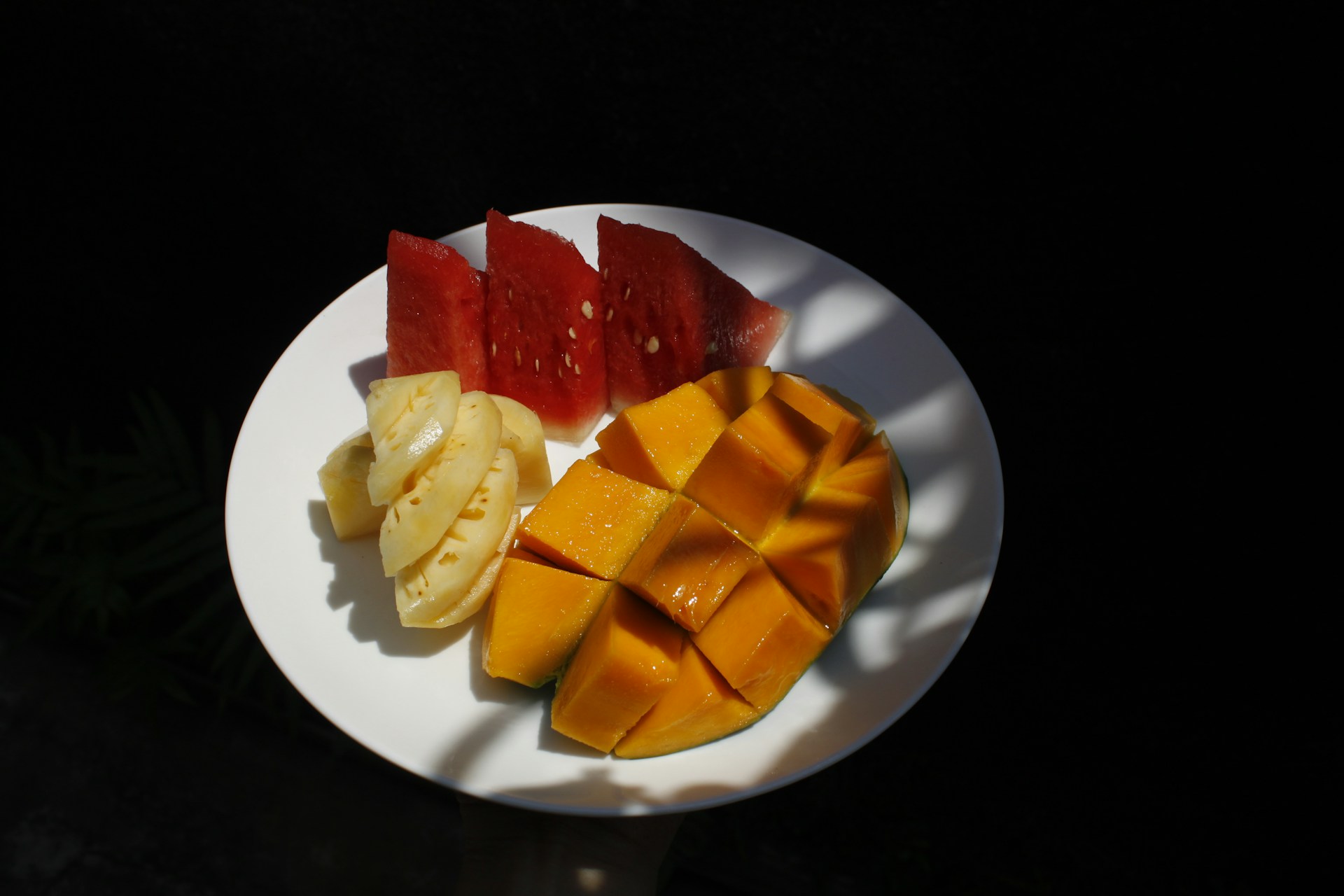Association between Fat Intake, Dietary Fiber Intake, Physical Activity with Triglyceride Levels among Type 2 Diabetes Mellitus Patients at Grogol Health Center, Sukoharjo
Hubungan Asupan Lemak, Asupan Serat dan Aktivitas Fisik dengan Kadar Trigliserida pada Penderita Diabetes Melitus Tipe 2 di Puskesmas Grogol, Sukoharjo

Downloads
Background: Hyperlipidemia is closely associated with dietary intake and physical activity. Excessive dietary fat intake, inadequate dietary fiber, and low physical activity will increase the risk of obesity and lipid profile disorder among type 2 diabetics.
Objectives: This study aimed to identify the association between fat intake, dietary fiber intake, and physical activity with triglyceride levels among type 2 diabetics.
Methods: A cross-sectional study was conducted using Sequential Random Sampling on 31 patients with type 2 diabetes with dyslipidemia from Grogol Community Health Center, Sukoharjo, in March 2023. The 3x24-hour food recall nonconsecutive days was used to collect data on fat and fiber intake, the International Physical Activity Questionnaire-Short Form (IPAQ-SF) was employed to obtain physical activity data, and the patient's medical record for the last month was utilized to obtain fasting blood sugar and triglyceride levels. The statistical test was carried out using the Spearman Rank correlation test.
Results: Around 54.8% of subjects had excessive fat intake (60.90 g/day); 96.8% of subjects had severe deficit fiber intake (9.74 g/day); 51.6% of subjects had low physical activity (894.74 METs/minute/week). A statistically significant association exists between fat intake and level of triglyceride (p=0.005; r=0.493), but there was no significant association between dietary fiber intake and triglyceride levels (p=0.897; r=0.024), and there was no significant association between physical activity and level of triglyceride (p=0.394; r=-0.159).
Conclusions: There is a significant association between fat intake and the level of triglyceride. As such, it is necessary to decrease intakes of saturated fat and trans fatty acids; replacing them with unsaturated fatty acids could be beneficial in lowering triglyceride levels.
Rusdi, M. S. Hipoglikemia Pada Pasien Diabetes Melitus. J. Syifa Sci. Clin. Res. 2, 83–90 (2020).
Sari, N., Fitri, E. & Wahyuni, D. Pengaruh Diabetes Self-Management Education melalui Media Buku Pintar terhadap Komitmen Perawatan Diri Penderita Diabetes Melitus Tipe II. Semin. Nas. Keperawatan ‘Strategi Optim. Status Kesehat. Ment. Masy. dengan Perawatan Paliat. Di Era Pandemi Covid-19’ Tahun 2021 124 (2021).
IDF. International Diabetes Federation. The Lancet vol. 266 (2019).
Kemenkes RI. Laporan Nasional Riskesdas 2018. Badan Penelitian dan Pengembangan Kesehatan http://www.yankes.kemkes.go.id/assets/downloads/PMK No. 57 Tahun 2013 tentang PTRM.pdf (2018).
Kane, J. P., Pullinger, C. R., Goldfine, I. D. & Malloy, M. J. Dyslipidemia and diabetes mellitus: Role of lipoprotein species and interrelated pathways of lipid metabolism in diabetes mellitus. Curr. Opin. Pharmacol. 61, 21–27 (2021).
Puspitasari & Aliviameita, A. Hubungan Profil Lipid Dengan Kadar Glukosa Darah Pada Pasien Diabetes Mellitus. J. Med. Lab. Sci. 1, 77–83 (2018).
Yuliantini, E., Sari, A. P., Nur & Edy Yunus, M. Total-Hdl (Intake of Energy, Fat and Fiber Content With the Ratio of Total Cholesterol-Hdl). Penelit. Gizi dan Makanan 38, 139–147 (2015).
Pramono, O. et al. Faktor VO2 max Atlet Softball Putri di Pemusatan Latihan Nasional (Pelatnas) Asian Games 2018. J. Olahraga 5, 175–183 (2020).
Sambriong, M. Hubungan Asupan Makanan Berisiko Dan Aktivitas Fisik Dengan Kejadian Diabetes Melitus Tipe II Di Kota Kupang Relationship of Risk of Food Intake and Physical Activity with Type II Diabetes Mellitus in Kupang City. J. Info Kesehat. 16, 44–58 (2018).
Sipayung, R., Siregar, F. & Nurmaini. Hubungan aktivitas fisik dengan kejadian diabetes melitus tipe 2 pada perempuan usia lanjut di wilayah kerja puskesmas padang bulan medan tahun 2017. J. Muara Sains, Teknol. Kedokt. dan Ilmu Kesehat. 2, 78–86 (2018).
Ratnasari, M., Santosa, A. & Rachmawati, D. A. Hubungan konsumsi lemak dengan indeks aterogenik pada penderita diabetes melitus tipe 2 di RSD dr. Soebandi. J. Agromedicine Med. Sci. 4, 7–12 (2018).
Lee, Y. H. et al. A simple screening score for diabetes for the Korean population: Development, validation, and comparison with other scores. Diabetes Care 35, 1723–1730 (2012).
Milita, F., Handayani, S. & Setiaji, B. Kejadian Diabetes Mellitus Tipe II pada Lanjut Usia di Indonesia (Analisis Riskesdas 2018). J. Kedokt. dan Kesehat. 17, 9 (2021).
Syatriani, S. Hubungan Pekerjaan Dan Dukungan Keluarga Dengan Stres Pada Pasien Dm Tipe 2 Di Daerah Pesisir Kota Makassar. Sinergitas Multidisiplin Ilmu Pengetah. dan Teknol. 2, 26–27 (2019).
Sari, S. W. & Adelina, R. Apakah Pola Makan Menjadi Faktor Dominan Kejadian Diabetes Melitus Tipe 2 di Indonesia? J. Pangan Kesehat. dan Gizi 1, 54–63 (2020).
Roifah, I. Analisis Hubungan Lama Menderita Diabetes Mellitus Dengan Kualitas Hidup Penderita Diabetes Mellitus. J. Ilmu Kesehat. 4, 7 (2017).
Soelistijo, S. Pedoman Pengelolaan dan Pencegahan Diabetes Melitus Tipe 2 Dewasa di Indonesia 2021. Glob. Initiat. Asthma 46 (2021).
Alza, Y., Arsil, Y., Marlina, Y., Novita, L. & Agustin, N. D. Hubungan pola makan, aktivitas fisik dan pelayanan kesehatan dengan kejadian Diabetes Melitus pada lansia di Puskesmas Pondok Gede Bekasi. J. GIZIDO 12, 18–26 (2020).
Rudi, Abil, Kruweh & Nara, H. Faktor Risiko yang Mempengaruhi Kadar Gula Darah Puasa Pada Pengguna Layanan Laboratorium. Wawasan Kesehat. 3, 33–39 (2017).
Yuniati, R., Pradigdo, S. F. & Rahfiludin, M. Z. Hubungan konsumsi karbohidrat, lemak dan serat dengan kadar glukosa darah pada lanjut usia wanita (studi di rumah pelayanan sosial lanjut usia Pucang Gading Kota Semarang Tahun 2017). J. Kesehat. Masy. 5, 759–767 (2017).
Wiardani, N. K., Dewantari, N. M., Purnami, K. I. & Prasanti, P. A. G. Hubungan Asupan Lemak dan Serat dengan Kadar Kolesterol pada Penderita Diabetes Mellitus Tipe 2. J. Kesehat. 7, 1–11 (2018).
Amanda, E. & Bening, S. Hubungan Asupan Zink, Magnesium, dan Serat dengan Kadar Gula Darah Puasa Pasien Diabetes Mellitus Tipe 2 di RS PKU Muhammadiyah Temanggung. J. Gizi 8, 87 (2019).
Hanani, Z., Suyatno, S. & Pradigdo, S. Faktor-Faktor Yang Mempengaruhi Konsumsi Sayur Dan Buah Pada Ibu Hamil Di Indonesia (Berdasarkan Data Riskesdas 2013) the Affecting Factors of Vegetables and Fruit Consumption on Indonesian Pregnant Women (Based on Indonesia Basic Health Research 2013). J. Kesehat. Masy. 4, 257–266 (2016).
Apriyani, F. Asupan Lemak Dan Serat Dengan Kadar Trigliserida Pada Pasien Diabetes Mellitus Tipe Ii. J. Media Kesehat. 7, 88–94 (2018).
Hutauruk. D, S. A. Kolesterol Pada Penderita Diabetes. J. Anal. Kesehat. Unefa 1, 27–29 (2019).
Kirana, D. N. Hubungan Asupan Nutrisi Dengan Kadar Trigliserida Pada Penderita DM Tipe 2. Heal. Care J. Kesehat. 7, 57–61 (2018).
Fu, L., Zhang, G., Qian, S., Zhang, Q. & Tan, M. Associations between dietary fiber intake and cardiovascular risk factors: An umbrella review of meta-analyses of randomized controlled trials. Front. Nutr. 9, (2022).
Putri, S. R., Angraini, D. I. & Kurniawan, B. Korelasi asupan makan terhadap kadar trigliserida pada mahasiswa obesitas di Fakultas Kedokteran Universitas Lampung. J. Agromed Unila 4, 232–237 (2017).
Crichton, G. E. & Alkerwi, A. Physical activity, sedentary behavior time and lipid levels in the Observation of Cardiovascular Risk Factors in Luxembourg study. Lipids Health Dis. 14, 1–9 (2015).
Copyright (c) 2024 Amerta Nutrition

This work is licensed under a Creative Commons Attribution-ShareAlike 4.0 International License.
AMERTA NUTR by Unair is licensed under a Creative Commons Attribution-ShareAlike 4.0 International License.
1. The journal allows the author to hold the copyright of the article without restrictions.
2. The journal allows the author(s) to retain publishing rights without restrictions
3. The legal formal aspect of journal publication accessibility refers to Creative Commons Attribution Share-Alike (CC BY-SA).
4. The Creative Commons Attribution Share-Alike (CC BY-SA) license allows re-distribution and re-use of a licensed work on the conditions that the creator is appropriately credited and that any derivative work is made available under "the same, similar or a compatible license”. Other than the conditions mentioned above, the editorial board is not responsible for copyright violation.












































